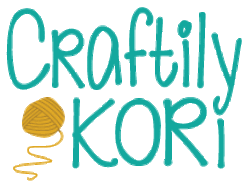The yarn bowls are continuing to be popular but I wanted to put more of my artistic spin on them. Yes, the horse hair and saggar ones are beautiful but they are also left to complete chance of the kiln and art mediums for their decoration. The glazed ones are a joy when seeing the transformation from dull colors in a jar to bright glossy ceramics once fired, but I’ve gone through almost all the available crystal and elements colors at the local ceramics store. Now that I’m nearing the 75th CraftilyKori bowl, it was time for a new technique and one that made the bisque yarn bowl a true “blank canvas.”
Arizona Inspired
Oh the Arizona sunsets. Sooo pretty. My husband and I have been in the Valley on and off for 10 years and I have spent my whole life in Arizona and let me say – we never get tired of the sunsets here. I found an article in the local newspaper, AZ Central, and they mention “Arizona also experiences some of the best sunsets, Zarzynski says, ‘because we have such an expansive and open sky. With all of the gorgeous mountains in the Valley and nearby opportunities to get into nature, Phoenix really has the perfect sunsets,’ she says.” She is not wrong!
What else do you think of when you think of Phoenix and Arizona? Cactus of course! It just wouldn’t be an Arizona Sunset if you didn’t also have a silhouette of cactus, specifically the Saguaro.



Prescott Inspired
I was born and raised in Prescott, Arizona – a small mountain town in Northern Arizona. It’s home to Whiskey Row, The World’s Oldest Rodeo, and my family’s business, Morgan Sign. One of the things that always surprises people when they visit Northern Arizona is the scenery and weather – mountains…large pine trees…and even snow! Growing up in Prescott meant beautiful fall hikes with changing leaves; snowball fights and sledding competitions, and not always needing to rely on AC in the Summer.
Two of the most notable landscape items of Prescott are Thumb Butte and Granite Mountain. Basically anywhere you drive around town you’ll see these items (even if you don’t see them on the horizon line, you’ll likely see it on a logo somewhere!) For the Prescott yarn bowls, I ditched the Saguaro cactus and opted for the prickly pear type – I have definitely had a few of these cactus barbs stuck in my ankles as a kid!





Painted Deserts Series…Roll-Out!
My husband went up to Parker, AZ to visit friends and play on the lake a few weekends ago. I had the whole house to myself! What to do, what to do? Ah, yes! Play with my yarn bowls. I had been wanted to do the painted desert series since I began making yarn bowls back in Sept 2020 but just never had the time to sit down and figure it out.
To begin, I wanted to make sure my supplies would work out. I had picked up some sample bisque tiles when I first started making the yarn bowls so I would have an opportunity to play around before diving into decorating a yarn bowl. I wanted to make sure that if I drew out my design with pencil first, the graphite wouldn’t show through when I stained the bisque since its a no-fire technique. It worked out! No “drafting” lines were present.
Now, was the fun part. I pulled up a bunch of photos for inspiration and started drawing out the sunsets. Thank goodness erasing on bisque also works! Once the idea was on the bowl, I used Duncan’s Bisq-Stain to create the silhouetted bottom portion. The inside looked a bit drab, so I opted to paint that as well. Next, was the painted dessert. Using pastels and an old paint brush, I layered color after color creating the sunset. The bisque piece can only “hold” so much chalk at a time, so in-between rounds, I had to spray a matte sealer and wait for it to dry. Four to five layers later….and it was done!!










After the first yarn bowl, I experimented with other options for the silhouettes to added a bit more depth and maybe expand to other Arizona areas like Sedona or Monument Valley. I decided to go with blue mountains to show perspective and break up the colors. I can’t decide which is my favorite!





These bowls are so fun to photograph because the colors just pop. They look equally as beautiful in person – next to the couch, holding your WIPs yarn.
They are now available on my Etsy store if you’d like to have one of your own!




Happy Crafting!
~Kori
























































































































































































